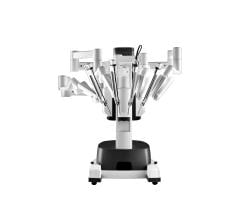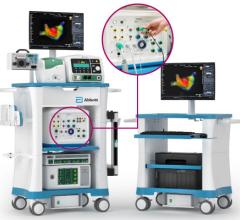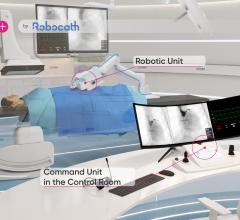
August 29, 2014 — Tony Parris has worked for banks and electronics companies and has even driven an 18-wheel truck 995 miles a day for more than nine years as part of his working career. The 57-year-old Anniston native finally went into business for himself when he opened his own hardware store in Alexandria in 2010.
Parris says he has worked six to seven days a week and 14- to 16-hour days for 40 years. Feeling a bit worn out might be understandable.
But Parris noticed that he was feeling worse than just a little worn down a few months ago. The fatigue began to exacerbate, and chest pains soon followed.
Parris went in to see Louis Brunsting, M.D, associate professor of surgery and chief of the Section of Minimally Invasive Cardiac Surgery at the University of Alabama at Birmingham, who discovered he had three blockages around the heart. Brunsting and Massoud Leesar, M.D., professor of medicine and chief of the Section of Interventional Cardiology, devised a new hybrid procedure. This included minimally invasive robotic bypass surgery to one vessel, as well as stenting to two remaining vessels — all in the span of three days.
Brunsting performed bypass surgery robotically of Parris’ left anterior descending coronary artery Monday, June 9. Two days later, Leesar performed an angioplasty procedure where he placed two drug-eluding stents to the other two blockages. By Thursday, June 12, Parris was headed home with light-duty restrictions and the knowledge that he would not have to come back to the hospital for additional bypasses, as would traditionally be required after robotic bypass surgeries with difficult cases like his.
“Usually surgeons will bypass three to five vessels, but there are occasions when the blockages are such that it may not be feasible,” said Leesar. “Mr. Parris is a diabetic and has small vessels, and Dr. Brunsting thought he wasn’t a good candidate for surgery of all the vessels. Fortunately, we were able to do this hybrid procedure for Mr. Parris and bypass the affected arteries in two minimally invasive ways.”
Hybrid procedures similar to this have been performed at other institutions in a combined robotic operating room/cardiac catheterization laboratory where a single-stage hybrid procedure can be performed.
Brunsting and Leesar modified the procedure to take place over three days instead of all at one time to decrease the risk of bleeding a patient could endure due to blood-thinning medication taken prior to the stenting procedure.
“It’s optimal to the patient to perform the surgical part first, then start blood-thinners once the danger of surgical bleeding has passed and before doing the stent procedure,” Brunsting said. “Frequently, patients are able to have the robotic bypass to the front of the heart, then return later for stenting of the other blocked arteries. We treated Mr. Parris during the same hospitalization because we were concerned his other blockages might become unstable and cause a heart attack if the stents were delayed.”
Leesar says a research study using the techniques performed in Parris’ case is the next course of action.
“I believe Mr. Parris’ case shows performing a hybrid robotic and stenting procedure this way is feasible and that we can do it,” Leesar said.
“This collaboration between cardiac surgeon and cardiologist for hybrid revascularization is just another example of a team approach to disease management we can provide, similar to transcutaneous aortic valve replacement, advanced heart failure and combined valve clinics,” Brunsting said.
Another benefit of the hybrid procedure was that it prevented Parris from having a standard bypass, where surgeons would have had to crack the chest open, which would have meant a longer and more painful recovery, in addition to a longer hospital stay.
With robotics, the incision to do the first bypass was very small. The stents were placed using the standard technique of inserting a catheter through the groin.
Parris says the procedures were not difficult to recover from, and that he used very little pain medication afterward.
“I’m more than pleased that I’ve had virtually no pain,” Parris said. “I’m very hopeful this hybrid procedure is going to give me my energy back.”
For more information: www.uab.edu

 June 11, 2024
June 11, 2024 








